Azog the Defiler was an Orc chieftain of the Third Age who commanded the tribes of Moria until his death during the Battle of Azanulbizar. He is well known among the dwarves as the slayer of Thrór, the late King of Durin’s Folk, and Thorin II Oakenshield’s grandfather.
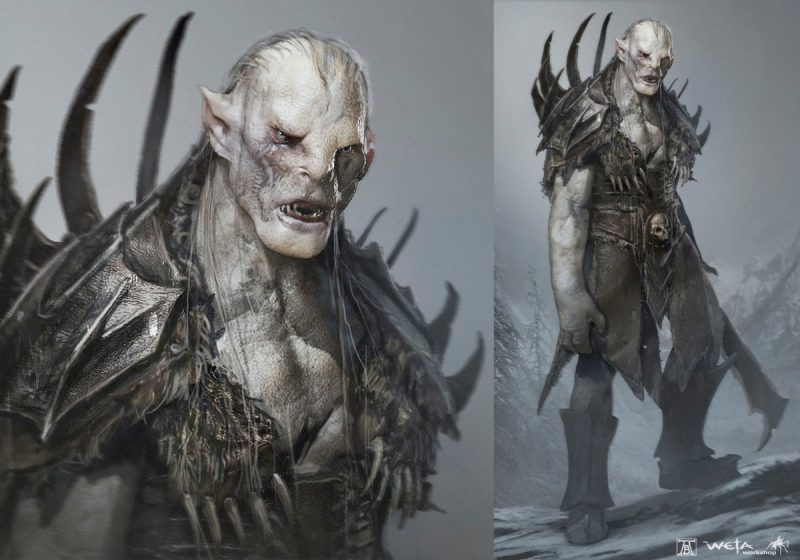
Concept art of orc chieftain Azog by Andrew Baker
Start of the Dwarf-Orc WarAzog’s prior history is lost. However, he first appeared in TA 2790 after encountering King Thrór, for which he became infamous. Azog beheaded the King and branded his name in his disembodied head. Then he tossed the lifeless body to Nár, Thrór’s close friend who accompanied him. “If beggars will not wait at the door, but sneak in to try thieving, that is what we do to them.” Azog threatened Nár, “If any of your people poke their foul beards in here again, they will fare the same. Go and tell them so!”. |
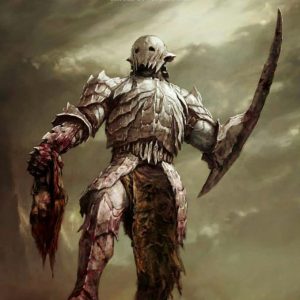 Concept art of Azog and the Death of Thrór by Nick Keller |
And the End
So, Nár fled with a burning hatred for the Orc chieftain in his heart, spreading the flames of outrage to his fellow Dwarves. This was the beginning of the War of the Dwarves and the Orcs. Thrór’s son Thráin spent three years preparing to hunt down Azog the Defiler and avenge his father.
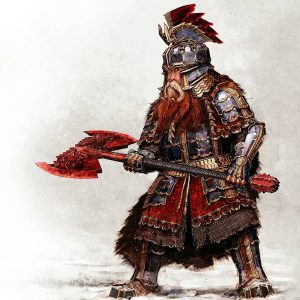 Dwarf Dáin Ironfoot |
It was this battle, the Battle of Azanulbizar (or Nanduhirion in Elvish), that Thorin II earned his name Oakenshield. Once Azog appeared on the battlefield, he was described as “a great Orc with a huge iron-clad head, and yet agile and strong.”. Náin challenged him personally, to which Azog replied: “What? Yet another beggar at my doors? Must I brand you too?”. Náin was overcome by rage and fell to Azog. |
Azog laughed in the face of his enemy thinking he had won. Yet, Dáin Ironfoot, son of Náin, swung down his red axe. He decapitated the great Orc where he stood, ironically facing the same fate as Thrór. Finally ending the War of the Dwarves and the Orcs.
However, this is not the end of their blood feud. Azog’s son, Bolg, aimed to avenge his father (deja vu?) and raised an army, the Orcs of the Misty Mountains.
Origin of the Orcs
The origin of the Orcs in the Tolkienverse is unclear. In the Silmarillion, it was said they were once elves – Avari or Dark Elves specifically – who somehow became violent and monstrous over time. However, in the Lord of the Rings trilogy, The Dark Power of the North created Orcs in the Elder Days. According to Appendix F of The Lord of the Rings, they were filled with malice and harbored a hatred of their people. They had no language and took what they could from other languages (pp. 409). Primarily their language was a collection of harsh curses and abuse. Over time, the language devolved into so many different dialects that it became easier to speak Common among each other.
What’s in a Name?
Black Speech was the language Sauron desired his followers to speak. Although failing to be widely used, the Orcs borrowed various words from it, such as ghâsh, meaning fire.
Even though Orc was the Rohan name given to them by the other peoples of Middle-Earth. In Sindarin, it was orch related to uruk in Black Speech. However, only great soldier-orcs such as Azog were called uruk.
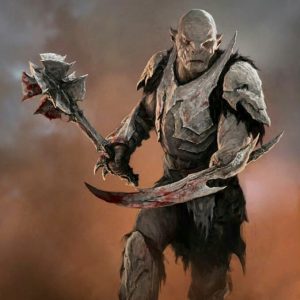 Azog concept art by Nick Keller |
Tolkien didn’t create the race of Orcs. Instead, he drew inspiration from Beowulf. Notably, he translated it from Old English himself. In his Nomenclature of The Lord of the Rings, Tolkien explains his process for the name, “[Tolkien] originally took the word from Old English orc [Beowulf 112 orc-nass and the gloss orc = pyrs (‘ogre’), heldeofol (‘hell-devil’)]. This is supposed not to be connected with modern English orc, ork, a name applied to various sea-beasts of the dolphin order.”
Now Starring: The Pale Orc
“Moria had been taken by legions of Orcs, led by the most vile of all their race, Azog the Defiler. The giant Gundabad Orc had sworn to wipe out the line of Durin. He began by beheading the King.”
—Balin, The Hobbit: An Unexpected Journey
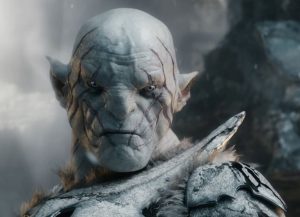 Azog from The Hobbit: Battle of the Five Armies |
In this portrayal of Azog, he’s played by Manu Bennett via motion capture and CGI. There are key differences between the book and the movie. As the saying goes: “The book is better than the movie!”. The two most noticeable differences: Azog survives The Battle of Azanulbizar unbeknownst to Thorin and company. Two, Azog serves Sauron directly as the general of the Orc armies; he spans the three movies as Thorin’s nemesis. More so, Azog loses his arm (which is replaced by a wicked claw/sword) in a battle with Thorin. The showdown with Azog ends with Thorin stabbing him with Orcrist, instead of being beheaded by Dáin Ironfoot.
Other VersionsThe Lord of the Rings OnlineIn Lord of the Rings Online, Azog has three sons: Komog, Bolg, and Urro, youngest to oldest, respectively. However, all but Bolg perish in the Battle of Azanulbizar. Bolg’s sons, Mazog and Gorgar, remain antagonists in Mines of Moria, Siege of Mirkwood, and Three Peaks expansions. |
 Azog from Lord of the Rings Online |
Want to learn more or check my sources?
Images and Sources
Images
Baker, Andrew. “Azog Concept Art.” Artstation, Andrew Baker, 2016, https://www.artstation.com/artwork/1ZADZ. Accessed 9 June 2023.
Keller, Nick. “Azog Battle Armor Designs.” Instagram, Nick Keller, 14 Nov. 2018, https://www.instagram.com/p/BqLlxNVFT_a/. Accessed 9 June 2023.
Keller, Nick. “Dwarven Concept Art.” Instagram, Nick Keller, 6 Nov. 2018, https://www.instagram.com/p/Bp21CScFfQF/. Accessed 9 June 2023.
Sources
“Azog.” Tolkien Gateway, 2 Apr. 2023, tolkiengateway.net/wiki/Azog.
“Bolg.” Tolkien Gateway, 23 May 2023, tolkiengateway.net/wiki/Bolg.
“Orcs.” Tolkien Gateway, 22 May 2023, tolkiengateway.net/wiki/Orcs.
Scull, Christina, et al. “Nomenclature of The Lord of the Rings.” The J.R.R. Tolkien Companion & Guide, HarperCollins, London, 2006.
Tally, Robert T. “Demonizing the Enemy, Literally: Tolkien, Orcs, and the Sense of the World Wars.” MDPI, 12 Mar. 2019, www.mdpi.com/2076-0787/8/1/54.
Tolkien, J. R. R. “Appendix A, III Durin’s Folk.” The Return of the King, Second ed., Houghton Mifflin, Boston, Mass., 1965, pp. 352–362. The Lord of the Rings.
Tolkien, J. R.R. The Silmarillion. Del Rey (Ballantine Books), 2020.
Tolkien, J R.R. The Hobbit. HarperCollins, 2014.
Whittingham, Elizabeth A. “The Evolution of Tolkien’s Mythology: A Study of the History of Middle-Earth.” Mythology, Edited by David Bratman, vol. 26, no. 3–4, 2008, pp. 202–203, https://dc.swosu.edu/mythlore/vol26/iss3/14/.



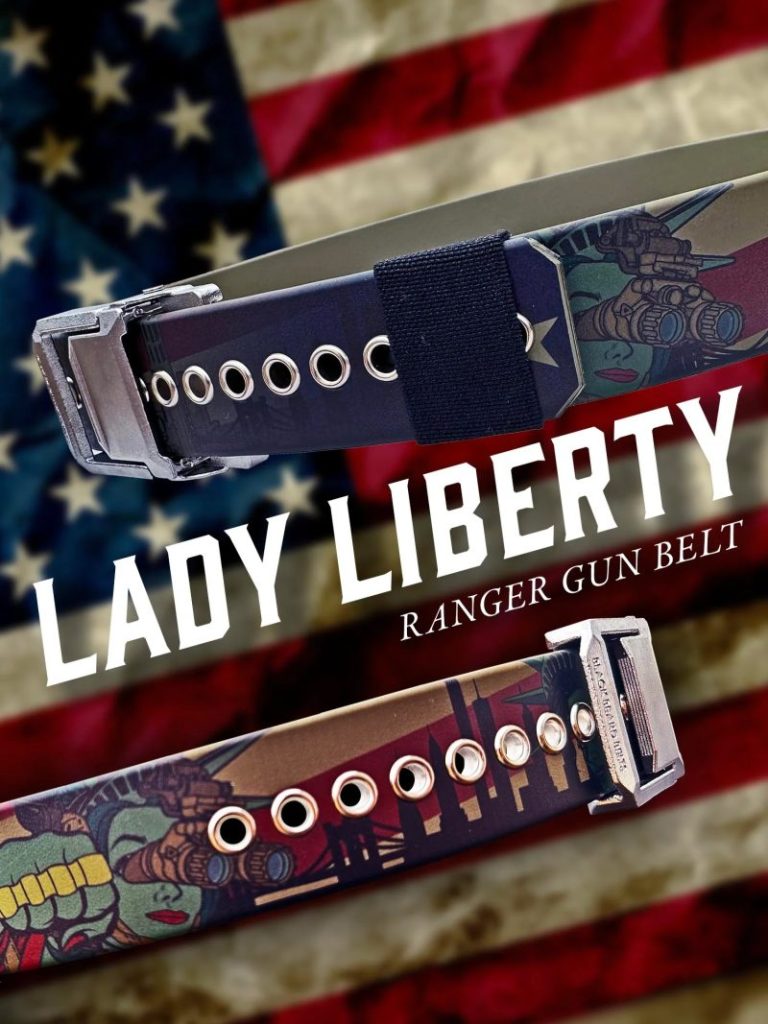
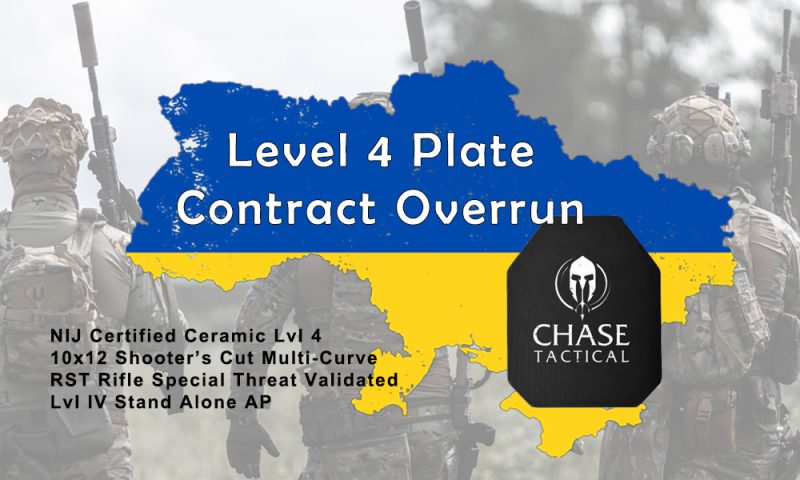




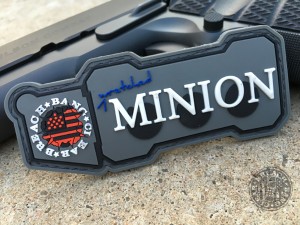
0 Comments